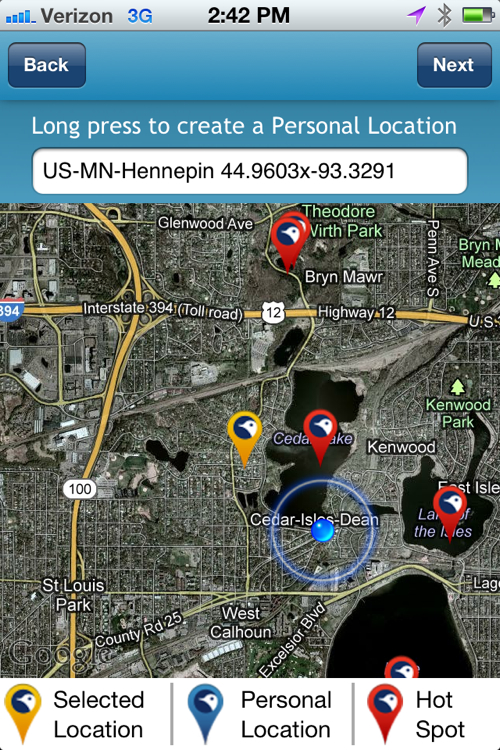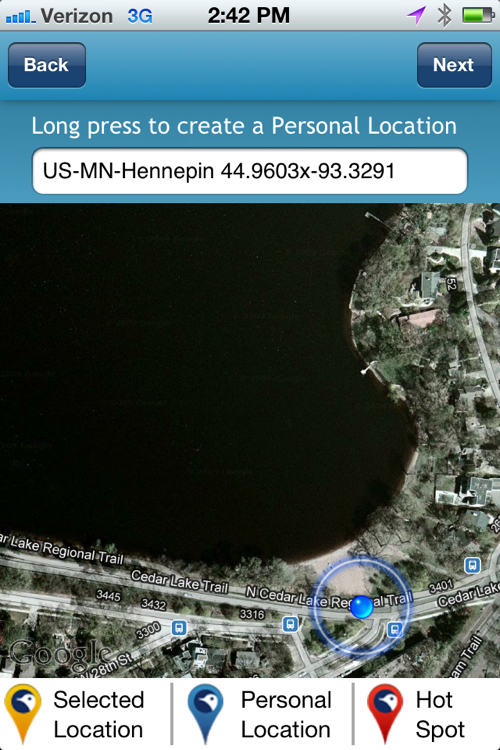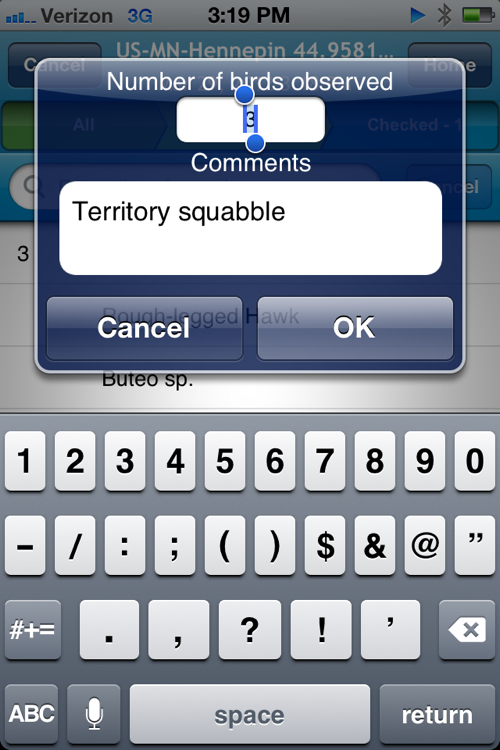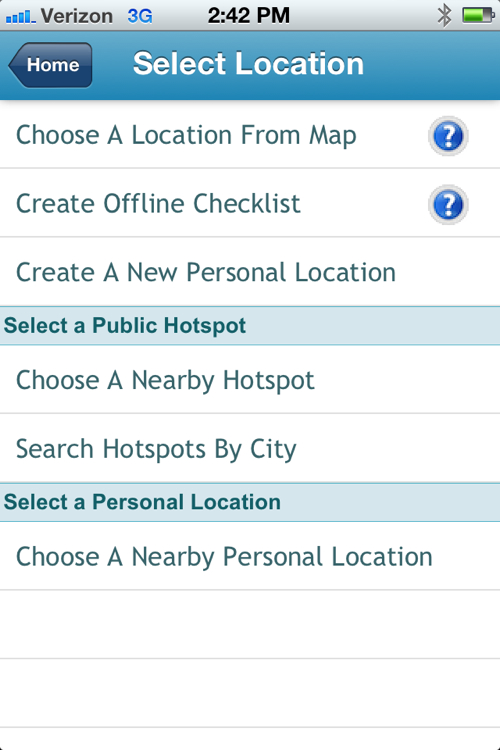I've long been a fan of the BirdsEye app, it allows you find out what's been reported to eBird and gives you an idea of birding hot spots all over North America. It's my favorite birding app of all the apps available--even over any of the field guides. It works on either an iPhone, iPod Touch, iPad and Android. You need some sort of Internet access, either via wireless or the 3G network. There's been a rumor that the app would eventually allow you to update your sitings from the field directly to eBird and we waited and waited for an update. Those of us with iPhones even felt a wee bit of bitterness when it was announced that the app was available to do just that via the Android and not the iPhone.
Now it is available and boy howdy have I been giving it a workout. One thing to understand, this is a separate app called BirdLog that allows you to enter sitings to eBird from the field, it is a separate app from the original BirdsEye app that allows you to see what is being reported.
Pros of the BirdLog app:
You can enter in eBird sitings directly from the field, as it is happening if you wish.

Let's say you are bike riding on a series of trails and there's a pond that particularly birdy but there's no known birding hot spot there. You can go into "Submit Sitings" and will tell you where you are and even let you know if you are near a birding hotspot. This is also handy if you in someplace like Nebraska and you're driving around and getting birds at various potholes.

I personally don't like hunting down locations in eBird because you have to do it by county, rather than city or township and I think it's a pain the butt to figure out. This app does it for you.
It gives you a list of the most likely species.
It will keep track of how long you are birding in an area for you, so you can start it as soon as you hit the trail (alas, it doesn't keep track of how far you traveled, but there are other apps for that).

The app allows you to make notes, "Red-tailed territory display" or "nest nearby."
You can have more than one list going. I have two lakes that I do as a loop when I'm bike riding and I was able to have both lists going.
Cons of the BirdLog app:
It's separate from the original BirdsEye app.
Doesn't keep track of how far you travel on the trail.
Once you have closed out and submitted your list, it's difficult to go back in and correct it (you might as well do it at home on your computer). You can't edit the list from the app, it will take you into eBird via your phone's web browser and eBird is not set up to be viewed in a friendly way on a phone (at least not on my iPhone 4s).
When submitting sitings, it defaults to numbers, rather than letters, gently forcing you to count how many birds you are seeing. I tend for most species to enter in "x" because I don't want to count how many grackles, red-winged blackbirds or gulls I see on the trail. I think this is more my own personal issue. I so often have to count birds for work and when I'm watching birds for fun, my brain doesn't want to do it. You can still enter in "x" you just have to switch screens.

Best Uses:
Driving around on remote roads and you have no idea where you are. This is ideal for areas like Sax Zim Bog where you are mostly driving down the road and periodically stopping to find birds.
Keeping a running list of what you're seeing in the field.
I'm particularly looking forward to using this in birding programs with kids. I can let one of them keep the bird list and carry an iPad (a good hook for the kid who doesn't want to be in the woods in the first place).
I think this is a really cool app to use with kids at home. Why wait for the Great Backyard Bird Count or Project Feeder watch to notice birds? You could set up a day once a week and have your kids check off the birds in your backyard, you could even use it to keep track of what day you note when certain species arrive--like orioles or hummingbirds.
I worry some people think entering sitings to eBird is only for those who are hardcore birders and are out in the field, but backyard species are important too, especially as the globe's climate is changing and we will see more shifts in bird populations.
Here's an intro video that shows you how it works:
http://www.youtube.com/watch?v=PNliquYImFw&feature=youtu.be
